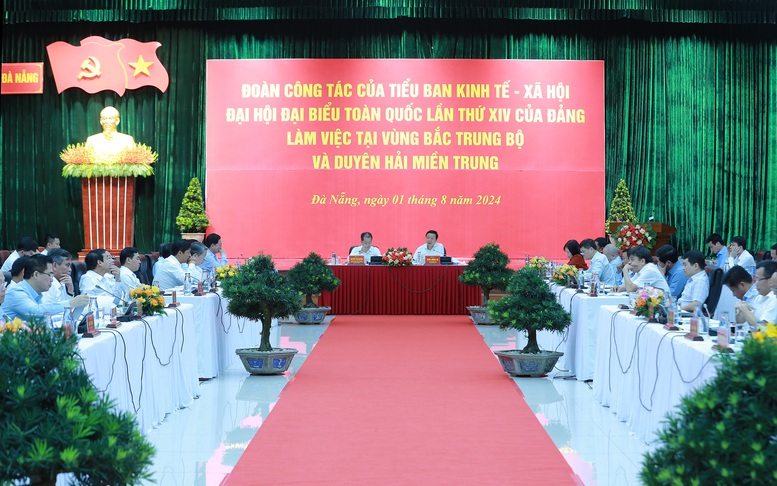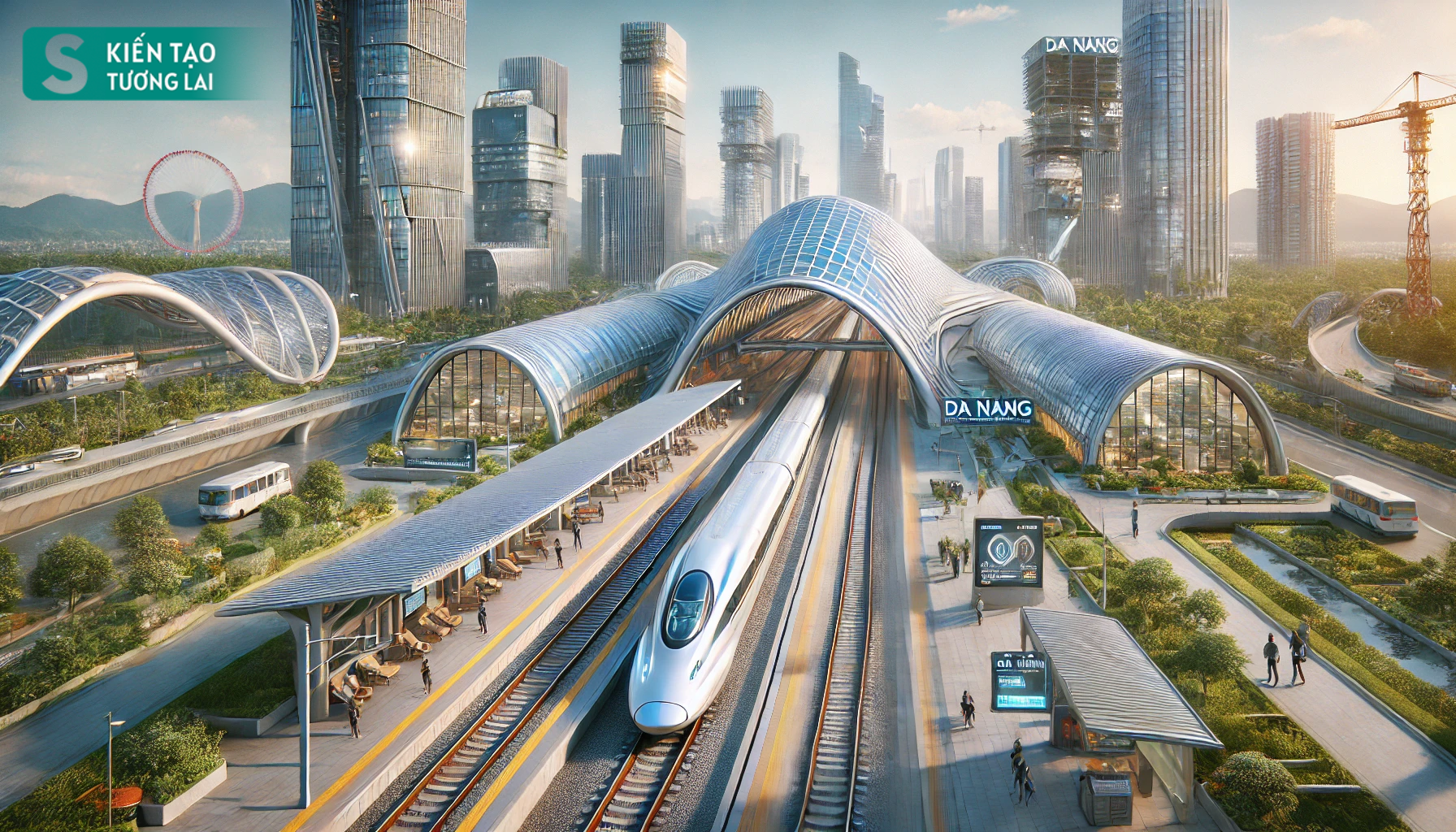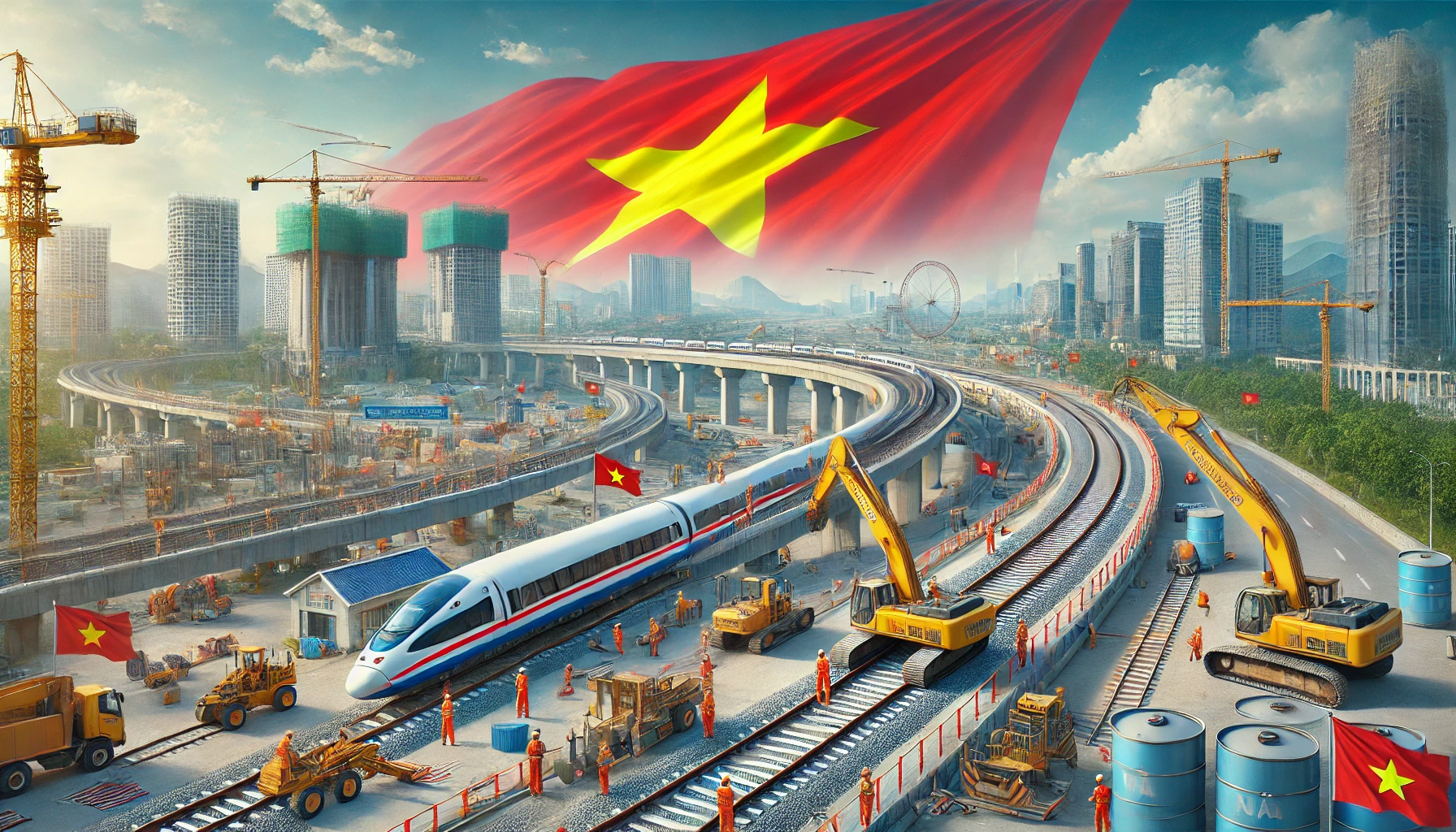Focusing on the Development of the High-Speed North-South Railway
On August 1st, Deputy Prime Minister Tran Hong Ha chaired a working session with the northern central and central coastal provinces at Da Nang city.
At the meeting, the secretaries of the provincial and municipal committees of the northern central and central coastal regions shared the view on the necessity of a high-speed North-South railway, or at least a high-speed railway connecting Thanh Hoa and Binh Thuan provinces in the next term.

Image from the working session. Photo: VGP/Minh Khoi
Le Truong Luu, Secretary of the Provincial Party Committee of Thua Thien Hue, suggested that the focus should be on constructing the North-South high-speed railway. He emphasized the need for clarity and inclusion in the five-year development resolution, with the high-speed railway as a key component.
Local leaders argued that once the Party identifies the breakthrough areas, it is essential to determine the “breakthrough within the breakthrough.” In terms of infrastructure, this means prioritizing the completion of the North-South high-speed railway.
Nguyen Van Quang, Secretary of the Da Nang City Party Committee, stated that to enhance connectivity along the country’s length, a high-speed railway is essential. He highlighted this project as a key development focus.
Additionally, the secretaries of the Da Nang and Nghe An Provincial Party Committees, Nguyen Van Quang and Thai Thanh Quy, respectively, emphasized the importance of addressing issues related to the role, position, and responsibilities of the Regional Coordination Council. They also advocated for resolving challenges pertaining to resources for regional planning implementation and continuing to upgrade and expand existing expressways. They prioritized investing in the high-speed railway section passing through the region.
Concluding the working session, Deputy Prime Minister Tran Hong Ha highly appreciated these contributions and provided feedback on the proposal to upgrade synchronously the expressways and construct the high-speed railway connecting the region, as well as integrating with sea and inland waterways and developing urban railways.
Strong Determination for the North-South High-Speed Railway Project
On July 11th, Prime Minister Pham Minh Chinh chaired a meeting of the Government’s Standing Committee on the proposal for investment in the North-South high-speed railway project, preparing to submit it to the competent authority for consideration and decision.
At the meeting, the Prime Minister emphasized the need for a breakthrough, innovation, strategic vision, modernity, and efficiency, in line with Resolution 49. He highlighted the goal of completing approximately 1,541 kilometers of the North-South high-speed railway across 20 provinces and cities within a decade, aiming for completion by 2035.

Illustration of a future high-speed railway station in Da Nang using AI ChatGPT
Previously, the Politburo issued Conclusion No. 49-KL/TW, and the National Assembly passed Resolution No. 103/2023/QH15. These documents mandate the research and acceleration of the construction of several critical national railway lines, including the East-West railway. They also emphasize the need to finalize the proposal for the North-South high-speed railway project, aiming for approval of the investment decision as early as possible in 2024.
In a report to the Government, the Ministry of Transport maintained the proposed high-speed railway line with a designed speed of 350 km/h and a length of approximately 1,500 km, serving both passengers and cargo when necessary. The existing North-South railway will be primarily used for cargo transportation, with an estimated investment of $70 billion.
Based on joint assessments by the Ministry of Transport and the General Statistics Office, the North-South High-Speed Railway Project is expected to contribute to an annual GDP growth of about 1% from 2025 to 2037.
These strong actions demonstrate the Vietnamese government’s determination to construct the North-South high-speed railway, indicating a significant breakthrough in various aspects with the emergence of a high-speed railway network.
What “Breakthrough” Values Will the North-South High-Speed Railway Project Bring?
This project will create a spillover effect, enhancing regional connectivity and growth poles, creating new economic development spaces, restructuring cities, redistributing the population, and transforming the economic structure. It will also increase the competitiveness of the national economy.
With its advantages of high-volume, short-time, reliable, and convenient transportation, the North-South high-speed railway will “shorten” the distance between localities and regions, connect markets, and generate a new development corridor. This will help alleviate population pressure and infrastructure overload in urban areas.
The project will also meet the transportation needs along the North-South corridor, which is the largest and most important transport corridor in the country.

The North-South High-Speed Railway Project is highly anticipated. AI ChatGPT illustration
Moreover, this “gigantic” project will create a market for mechanical engineering, equipment manufacturing, and carriage production industries, as well as auxiliary industries. Initially, it will meet the demand for domestic equipment and component production, gradually moving towards exports within the global supply chain (with an estimated domestic market demand for carriages of $12 billion).
Research by the International Union of Railways (UIC) indicates that high-speed railways are a sustainable, safe, environmentally friendly, and land-efficient mode of transportation. The operation of the high-speed railway will contribute to sustainable development, resource conservation, and safety in transportation.
In conclusion, the establishment of a high-volume, fast, and safe transportation system, such as the North-South high-speed railway, will not only address transportation needs but also promote the socio-economic development of the country. It will drive the growth of cities along the route, connect economic hubs, and redistribute the population, preventing concentration at the country’s two poles.















